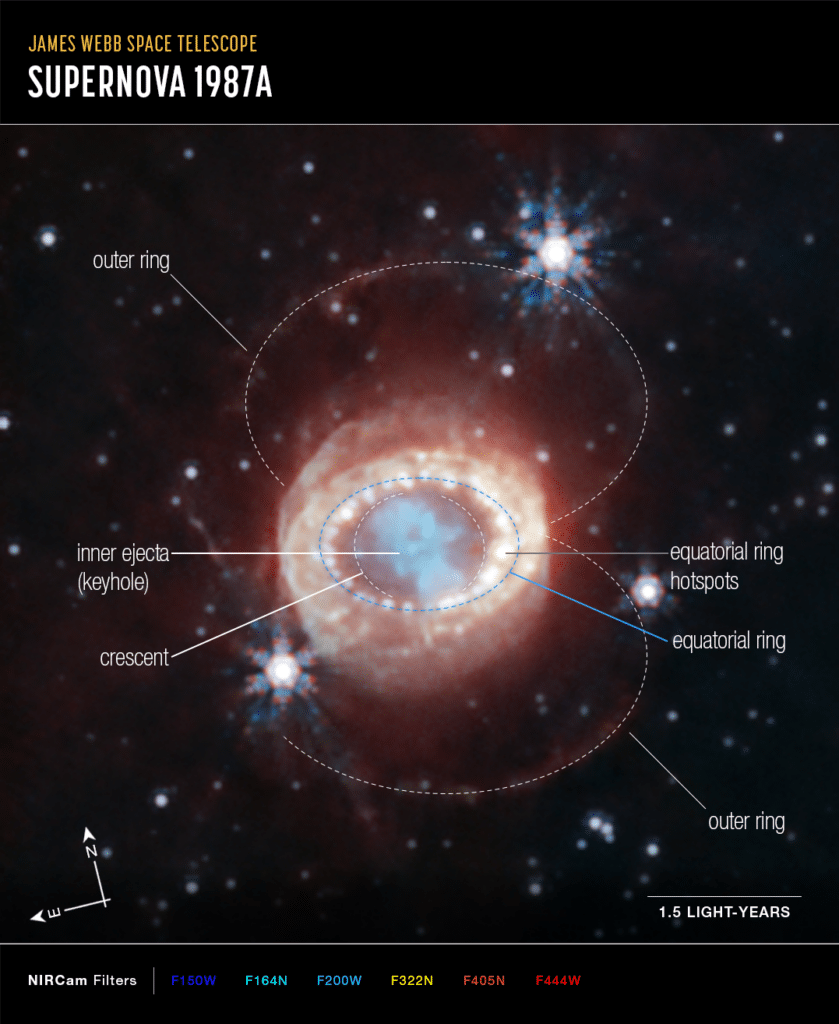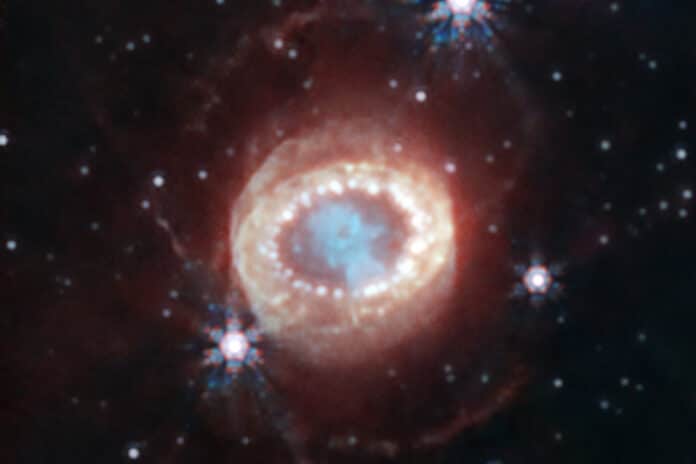The most renowned supernova, SN 1987A (Supernova 1987A)- has been a target of intense observations at wavelengths ranging from gamma rays to radio since its discovery in February of 1987.
NASA‘s James Webb Space Telescope also focuses on SN 1987A (Supernova 1987A). It is located 168,000 light-years away in the Large Magellanic Cloud. The new observations show how a supernova develops over time to shape its remnant.
A new image released reveals a central structure like a keyhole. The supernova explosion released clumpy gas and dust, abundant in this center. The keyhole’s dark “hole” was created by the dust, which is so dense that even the near-infrared light that Webb can see cannot pass through it.
The inner keyhole is surrounded by a bright equatorial ring that forms a band around the waist that joins the two faint hourglass-shaped outer ring arms. Bright hot spots can be found in the equatorial ring, created by material expelled tens of thousands of years before the supernova explosion and appeared when the shock wave from the explosion reached the ring. Now that the ring is surrounded by diffuse emission, spots can be found outside it. These are the places where supernova shocks are striking more external material.

Although NASA’s Hubble, Spitzer, and Chandra X-ray Observatory have all spotted similar structures to differing degrees, Webb’s unparalleled sensitivity and spatial resolution have discovered a brand-new characteristic in this supernova remnant: minuscule crescent-shaped formations.
The outermost layers of gas ejected from the supernova explosion are thought to contain these crescent-shaped objects. They may be bright because of limb brightening, an optical phenomenon that happens when the material expands in three dimensions. In other words, from our vantage point, these two crescents contain more material than they do.
Another interesting aspect of these images is their great resolution. Before Webb, this supernova was detected in infrared by the now-retired Spitzer telescope for its existence, providing important information about how its emissions changed over time.
